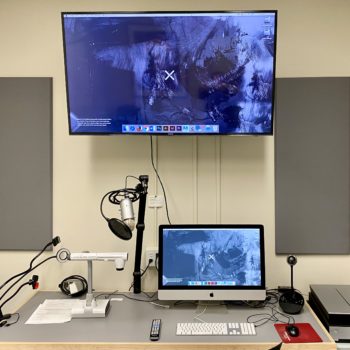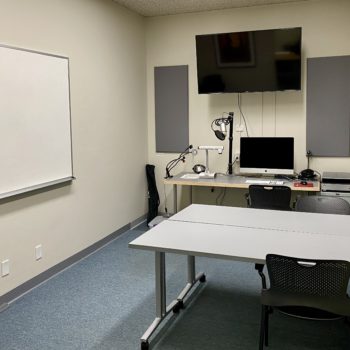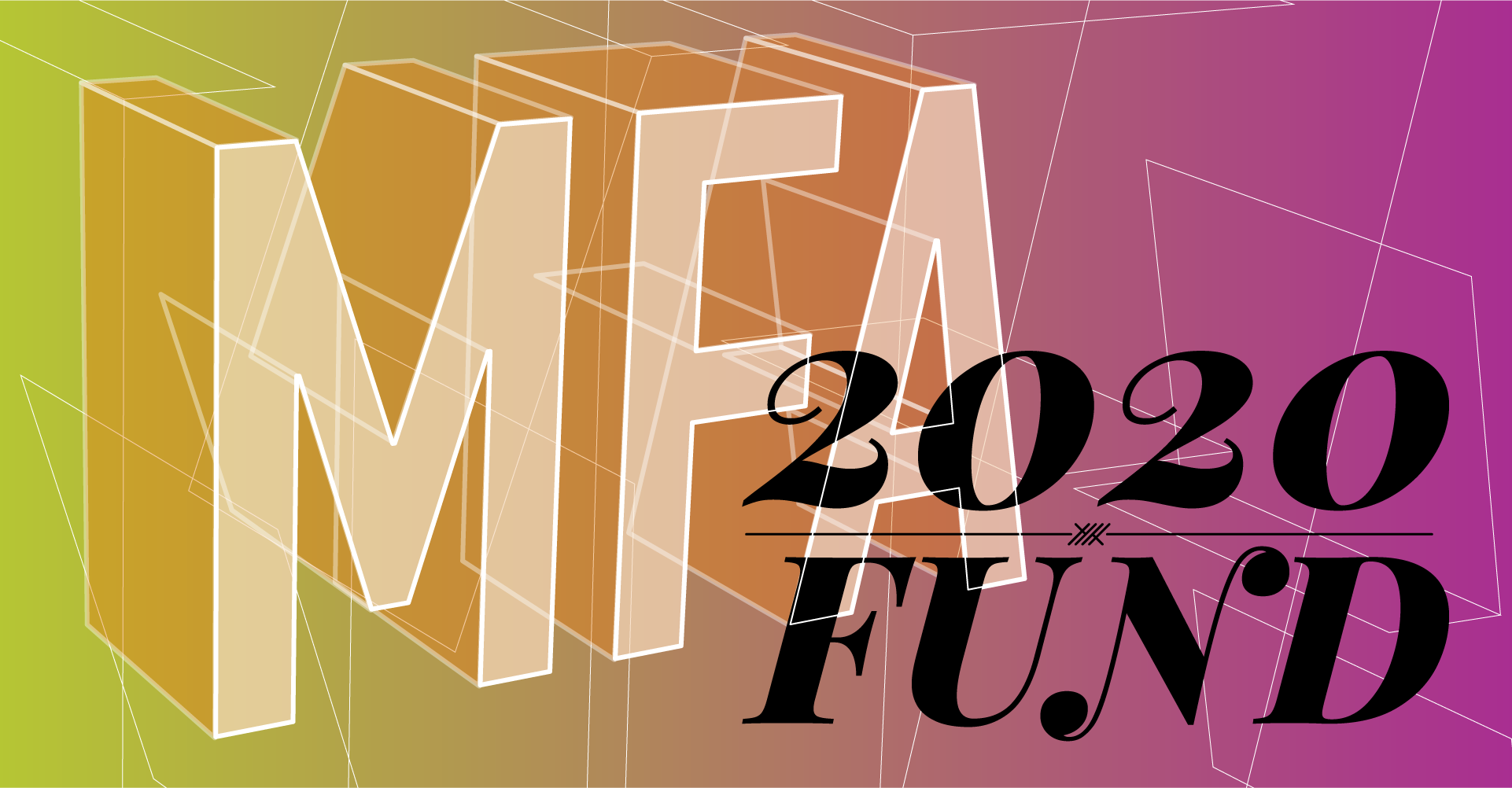Teacher Training and Support
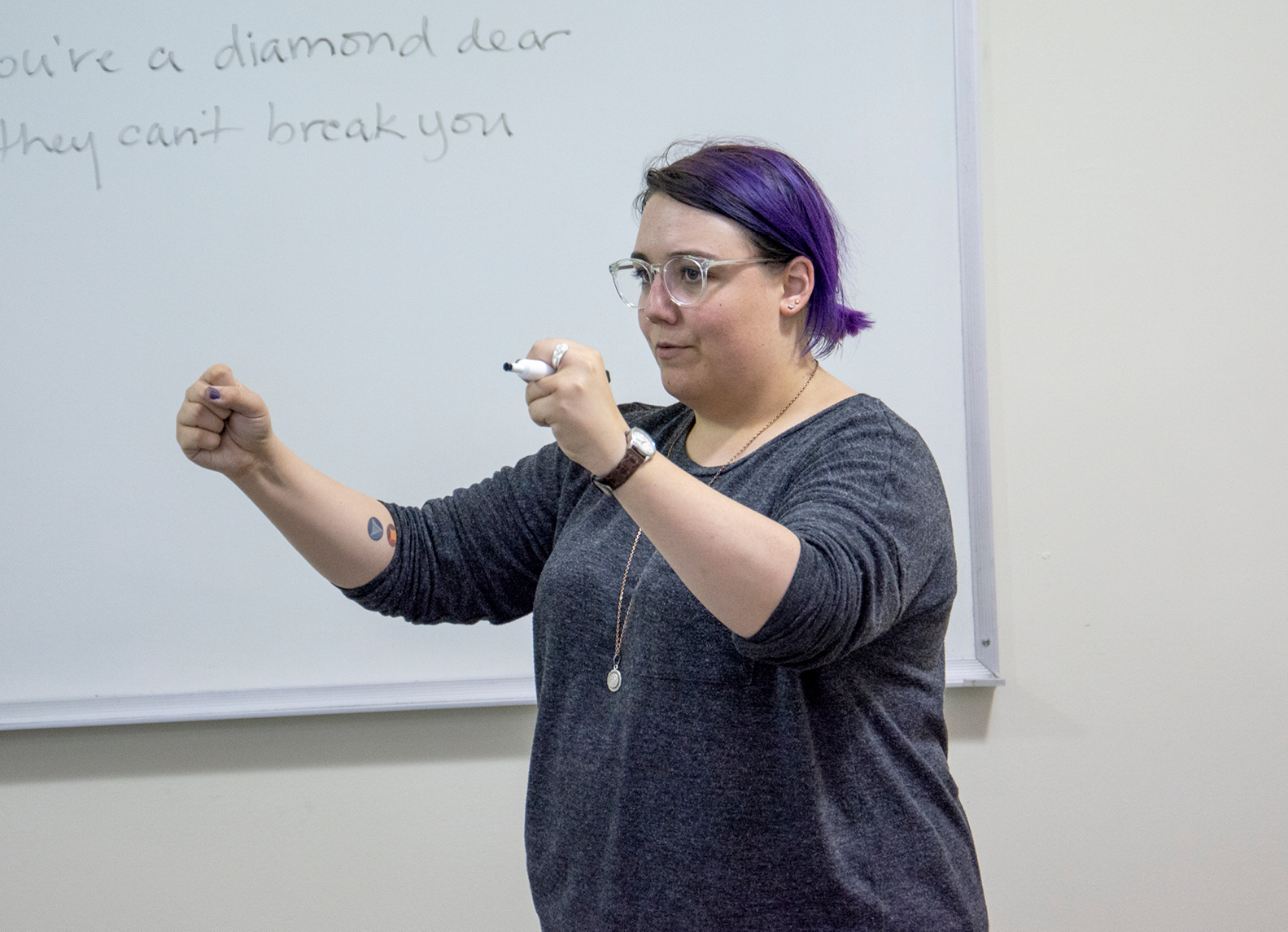
Many people want to get their MFA to pursue teaching in higher education, which is very challenging. This page summarizes how the MCAD MFA Program supports that path with coursework, teaching assistantships, and other resources.
This page also supports learning how to teach art and design for securing jobs in instructional design, museum education, workshop leadership with art centers, continuing education programs, and independent online teaching (Skillshare, iTunes U, Teachable, Simpliv, BitDegree, Coursera, LinkedIn Learning, AirTract, Kajabi, etc.) by effectively engaging a wide range of people.
For those interested in higher ed, we need to acknowledge that it is increasingly difficult to secure full-time teaching positions due to a variety of factors related to the higher education market. To learn more, please read The Professor Is In by Dr. Karen Kelsky, which goes into detail about the current higher ed job market, and the work required to possibly secure a full-time position in academia.
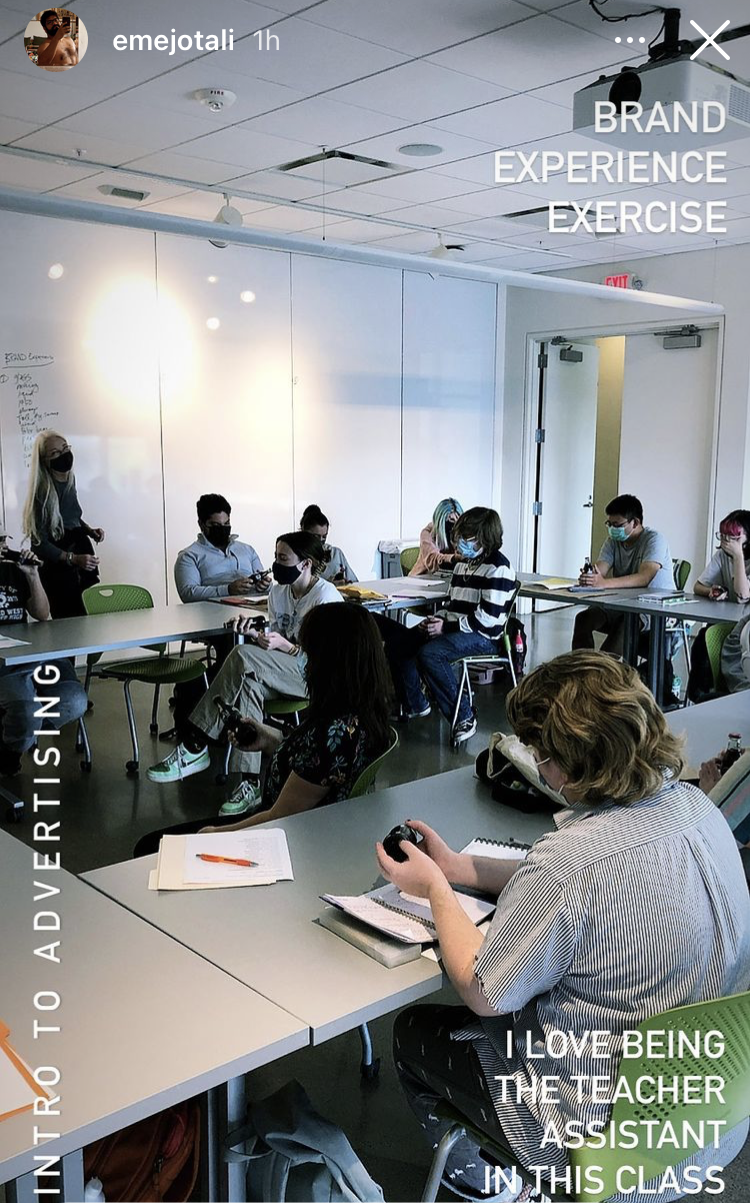
Jesus Li ’23 as GTA
Coursework
Something that sets the MCAD MFA program apart from others is that we offer the Teaching Art and Design Online Certificate (3 credits) through MCAD Continuing Education. This course counts as one of your MFA electives, AND allows our graduates to leave MCAD with not only their MFA degree, but also this focused certificate.
Through these three 5-week mini-courses (each mini-course is worth 1 credit), students learn strategies to develop high quality online course design, how to help artists and designers facilitate the creative process remotely, and how to conduct critiques effectively online.
Here are some quotes from our Fall 2020 students:
- “I wanted to learn about teaching online — specifically for art and design. I knew nothing about this topic. The three-part course was really informative, topical, and I learned a great deal. I also used some of what I learned and applied it to my GTA position.” – Student
- “I appreciated that the instructors demonstrated lots of ways to develop community in our online setting.” – Student
- “The scaffolding of tasks always made the final project less daunting, and we were always able to tie back to previous lessons and content to really solidify our understanding of each module. I also thought it was very valuable to be able to start building our own courses and assignments for our future classes.” – Student
- “I learned a lot from the readings, discussions, in-class exercises, and homework assignments. Each assignment was clearly aligned to a course objective.” – Student
GRLA 7022, Teaching in Higher Ed Seminar, 3 credits
This course introduces graduate students to general teaching pedagogy, course planning resources, as well as classroom and course management. It exposes students to teaching and learning theories as they develop skills in the higher education classroom. Students in this course will be assigned a teaching assistantship position simultaneous with this course. The cohort will reflect together on their weekly experiences in varied classrooms. The course will also introduce professional documents and strategies for teaching job applications and interviews.
Graduate Teaching Assistantships (GTAs)
Each semester of the MFA program, students have the opportunity to assist a different instructor at Minneapolis College of Art and Design. You can read more about the guidelines for graduate teaching assistants in our guidelines document.
Additional Resources
Library Room L123: Teaching Production Studio
This is a private reservable space for producing instructional content for courses. Sign up from the Library’s intranet page to make sure it’s available. Located in the MCAD Library, just stop by the front desk to pick up the key. It is a quiet space, great for recording video and audio or conducting conference calls. If this is your first project, user-friendly instructions will also be available.
- ImageMate Document Camera is ideal for video or image capture of hands-on demonstrations or to image and discuss small scale work.
- A scanner is available to scan documents or 2D work.
- A big LCD Screen, conference camera, and movable tables that will let you conduct conference calls
- A Yeti Microphone will record high-quality audio, and the soundproofing and quiet location will help keep unwanted noises out.
- An editing station offers access to the simplified editing program “Screenflow” which is optimized for the editing and production of instructional video.
- Teaching Production Studio
- Teaching Production Studio
Priming the Canvas Training
The Online Learning office offers this self-directed course several times per year to help faculty and MFA students orient themselves to Canvas, our learning management system.
Summer Teaching Institute
The Online Learning office offers this series of webinars to facilitate faculty members sharing their teaching expertise with one another. MFA students are welcome to join.
Pre-College Summer Session
Our MFA students and alumni often teach and assist in MCAD’s Pre-College Summer Session program, which is a two-week residential program for high school students.
LinkedIn Learning
While you are a student at MCAD, you get free access to all the courses on LinkedIn Learning. This includes a number of trainings, such as Core Strategies for Teaching in Higher Ed, Flipping the Classroom, Project-Based Learning, and many more.
Professional Practices Webinars
The MCAD MFA program has produced a number of videos that help students prepare their job application documents:
- Cover Letters and CVs
- Research/Artist Statements and Teaching Philosophies
- Diversity Statements and Letters of Recommendation
- Find additional supporting documents here (this includes templates for many of these documents)
Additional Tips for Building Your Teaching Experience
We have this document with tips for bolstering your chances of landing a job. It includes specifics for while you’re an MFA student at MCAD, and tips for after you graduate.
TWIN CITIES REGIONAL ART CENTERS
Often located in the suburbs outside of the Twin Cities, these art centers have education programs, where you can apply to teach classes and workshops. Many of these places also have galleries and will have open calls for shows, so it might be worth checking out their spaces if you’re looking to show your work outside of the Twin Cities.
- Hopkins Art Center
- Eden Prairie Art Center
- Minnetonka Arts
- Edina Art Center
- White Bear Arts
- Artistry MN
- Eagan Art House
- Caponi Art Park
- Maple Grove Arts Center
- Bloomington Parks and Recreation
- Franconia Sculpture Park (Shafer, MN)
- The Phipps (a little further out – St. Croix Valley)
- Art in Motion (Holdingford, MN)
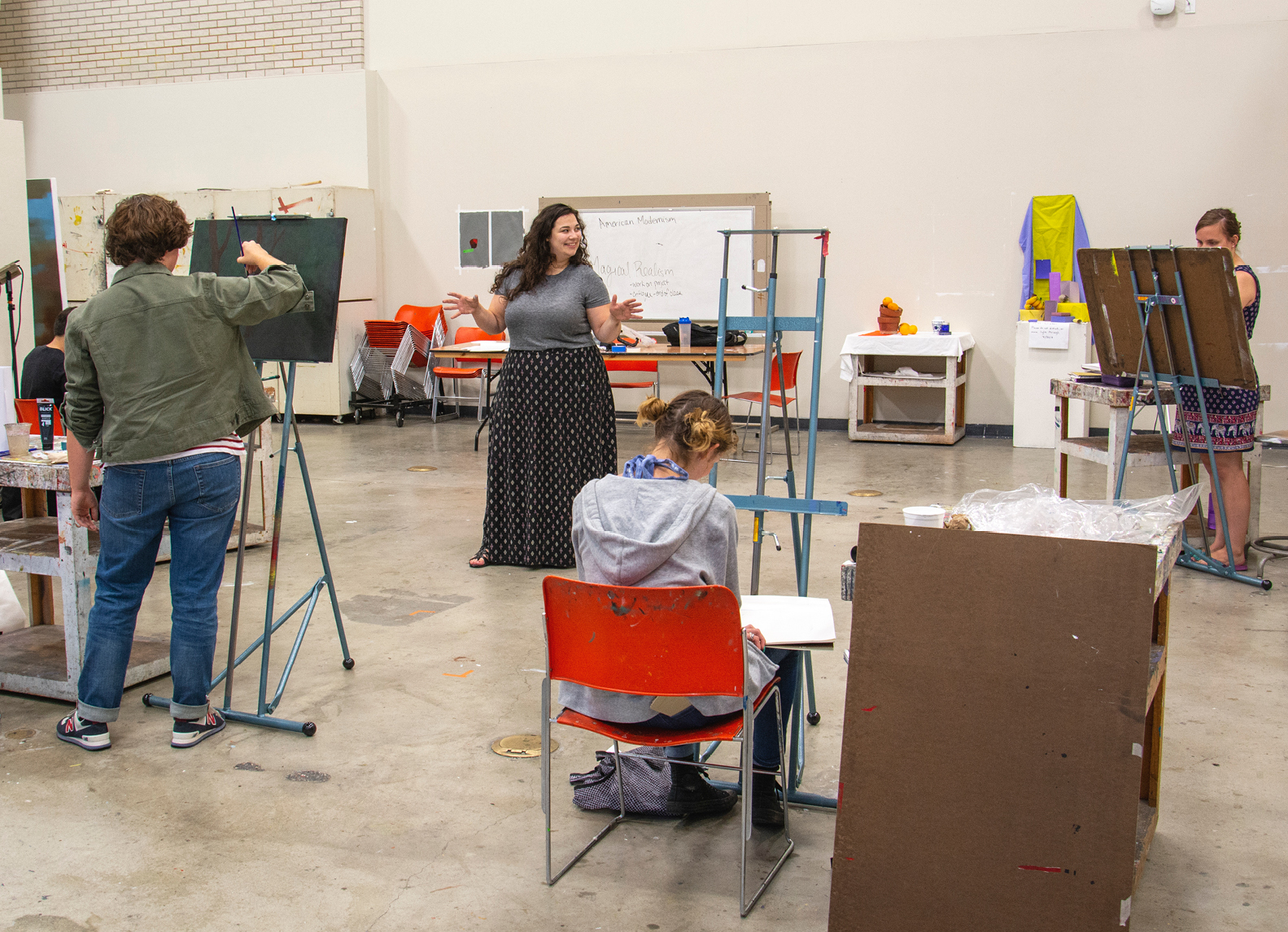
Erin Sandsmark ’17 Teaching a Continuing Ed course
REGIONAL COMMUNITY ED & CONTINUING ED:
Apply to teach through community ed, continuing ed, and professional development programs. Adding these often niche courses to your CV can help you stand out with specific skill sets needed in your field.
- St. Paul Community Ed
- Minneapolis Community Ed
- MCAD Continuing Ed – see Course Proposal Form
- Minneapolis College (downtown)
ONLINE TEACHING
A great way to build your teaching CV is to teach at a few online colleges. Do a quick online search for “top online art programs” and you’ll find lists like this one, which will help you target job boards at specific institutions.
You can also teach online, but outside of higher ed via independent online teaching (Skillshare, iTunes U, Teachable, Simpliv, BitDegree, Coursera, LinkedIn Learning, AirTract, etc.).
NETWORKING WITH ALUMNI
Reach out to the MFA Program director to get connected to other MCAD MFA alumni who are teaching in higher ed, regional art centers, or independently. This can be a great way to keep your name fresh and available when new positions or opportunities come to light at alumni institutions.
INSTRUCTIONAL DESIGN
Interested in a career as an instructional designer? Check out this wonderful resource list compiled by Cate Heiderscheidt, MCAD’s instructional designer.
Additionally, you can take a number of LinkedIn Learning trainings related to instructional design such as Become an Instructional Designer, How to Design and Deliver Training Programs, Tips for Learner Engagement, and more.
PROFESSIONAL TUTORING
1-on-1 or small group tutoring is a great way to build your teaching skills. You can offer tutoring services independently or with a company like Varsity Tutors, Sylvan, Princeton Review, and others.
ESL/ELL TEACHING (DOMESTIC & OVERSEAS)
English as a second language (ESL) or English Language Learning (ELL) teachers work with non-native speakers to help them learn to speak, read, understand, and write in English. They may work in public or private schools, language academies, or teach private lessons out of their home or the homes of students. The term ESL/ELL is just one way to refer to the field.
EDUCATION TECHNOLOGY
If you are drawn to teaching technologies, the field of Ed Tech might be for you. These are wide-ranging jobs, and it’s easy to find job listings by simply searching the key term “ed tech jobs.”


